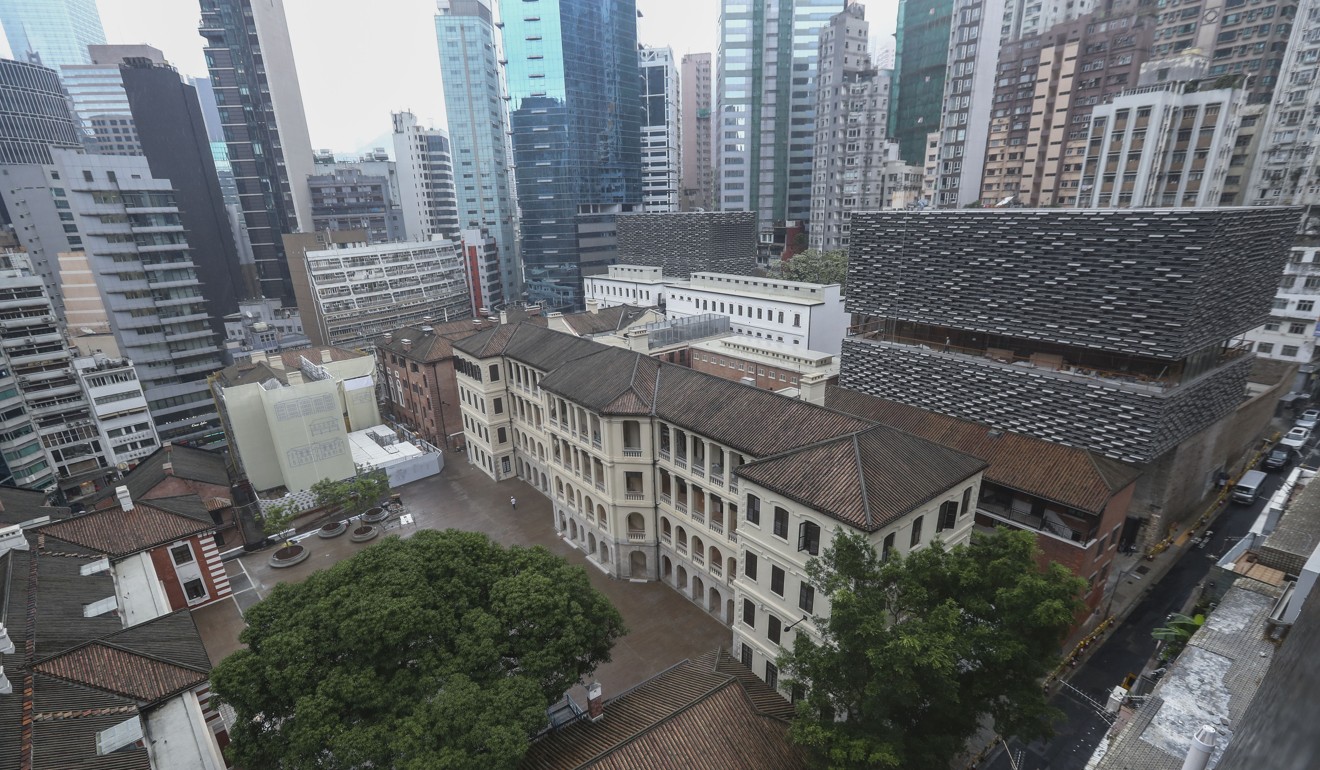
Hong Kong contractors acquitted over 2016 collapse at historic former Central Police Station in Central during transformation into Tai Kwun heritage site
- Verdict comes three years after partial collapse at Married Inspectors’ Quarters during compound’s transformation into Tai Kwun heritage site
- Magistrate sides with defence, overturning prosecution based on government’s investigation into the project
The finding emerged at Eastern Court on Thursday as a magistrate acquitted two contractors and an engineer that had been prosecuted based on the government’s investigation into the project that transformed the former police compound into the Tai Kwun art and heritage site in Central.
Gammon Construction was found not guilty of one summons alleging deviation from the plans approved by the Building Authority. The contractor was also cleared of allegations that it had carried out, authorised or permitted works in a manner that was likely to cause a risk of injury to people or damage to property.
Leung Chi-hung, the contractor’s authorised signatory, and Stonewest (HK), a subcontractor, were acquitted of the same charge. All three defendants applied for costs but were met by objections from the prosecutors.

Magistrate Veronica Heung Shuk-han was expected to hear further submissions on August 26.
Her verdict came three years after a wall and part of the roof of the Married Inspectors’ Quarters at the compound on Hollywood Road collapsed while its timber floor was being reinforced on May 29, 2016. No one was injured.
The Buildings Department found the collapse was likely caused by the hollowing out of multiple pockets in brick piers and walls during the installation of steel support for the floor of the veranda.
During legal proceedings that began in July 2017, prosecutors alleged that the work carried out on the compound had deviated from the approved plans because of the holes drilled. Prosecutors said some of the holes were deeper, wider and higher than what was on the approved plans.
They also accused workers of failing to grout the openings properly and completely.

Wong Chi-ming, an engineer for the prosecution, explained that the holes had caused a significant increase in stress and had adversely affected the structural stability of the building, causing its collapse.
But the defence argued that the holes did not cause the collapse, or even adversely affect the building’s structural stability.
Their expert said the prosecutors’ analysis was poor, so he conducted his own calculations. He said his research led him to conclude that the holes did not trigger the collapse.
“The pocket openings may not have caused the partial collapse of [the building],” she said.
Heung also found the project manager an honest witness when he testified to seeing that the relevant pocket openings were properly grouted.
“The prosecution has failed to prove each and every element of all summonses,” the magistrate continued. “All defendants are acquitted.”
A spokesman for Gammon Construction said the company was pleased with the court ruling.

